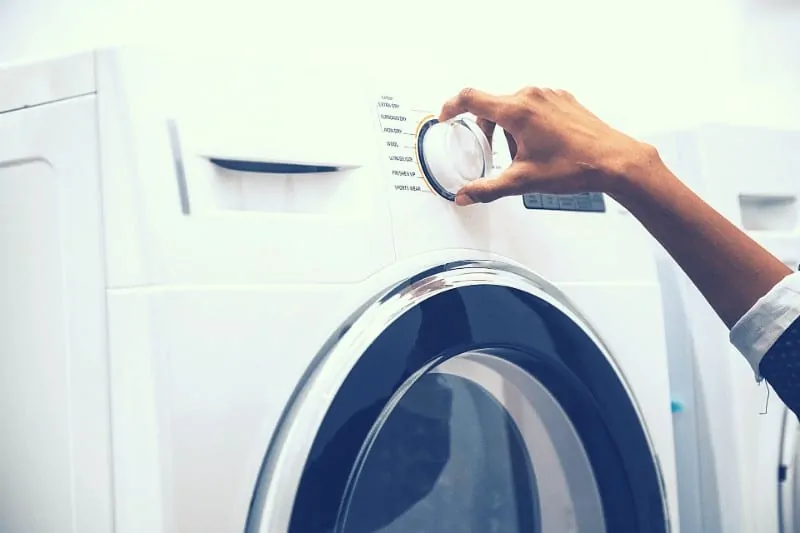Table of Contents
- 1 1. Take advantage of natural light
- 2 2. Replace incandescent bulbs
- 3 3. Turn off lights
- 4 4. Go Solar
- 5 5. Use a portable/space heater
- 6 6. Consider warming yourself
- 7 7. Use ceiling fans even during winter
- 8 8. Adjust the water heater’s thermostat
- 9 9. Invest in a programmable or smart thermostat
- 10 10. Wash cloths with cold water
- 11 11. Hang your clothes on clotheslines to dry
- 12 12. Swap out old appliances with energy-efficient models
- 13 13. Get smart with your cooking appliances
- 14 14. Beware of energy vampires
- 15 15. Minimize appliance use
- 16 16. Reduce water usage
As the cost of energy escalates and the bills become more pressing, conserving energy at home should be at the top of everyone’s list of resolutions by now.
Successful energy conservation is all about preventing energy loss, buying energy-saving appliances and gadgets, and making smart decisions on when and how to utilize energy.
Here are 16 energy-saving tips that will save you hundreds of dollars on your monthly energy bills.
1. Take advantage of natural light
Using daylight is a key way of cutting your energy bills. Opening all the curtains could fill the entire house with absolutely free sunlight. And the best part is that natural light hardly produces any heat. Thus, depending on the weather, you won’t need to turn on the fans and coolers.
2. Replace incandescent bulbs
Light bulbs have a significant contribution to your energy bills. And the bills could get much higher if you are using incandescent bulbs that suck 60 watts but only use 5% of this to produce energy. Be smart and replace all the incandescent bulbs with CFL (Compact Fluorescent) bulbs that use utmost 15 watts to produce 800 lumens.
3. Turn off lights
You must have learned this in your pre-school. It is the easiest and hands down the cheapest way of cutting down energy costs. Making it a behavior to turn off the lights whenever you aren’t using them could save you upwards of $200 annually.
4. Go Solar
The sun offers a reliable and completely free source of energy that could save you upwards of $200 annually. Other than running everything on grid power, how about getting a solar-powered generator to power and charge most of your low-draw appliances? The best part about a solar generator is that you can carry it to camps, hikes, and fishing grounds too and you won’t need to spend a penny on fuel.
5. Use a portable/space heater
Running a full-house heater is a surefire way of keeping the entire house warm throughout the winter. But these things are darn energy-suckers and will shoot your energy bills over the roof. Whenever you are not using all the rooms in your house, switch off the Central Air and get a space heater that you can move around with. Note, however, that this only makes sense when you are using just a part of the house. Otherwise, a whole-house heater can be much more efficient.
6. Consider warming yourself
If it’s not wintering yet, you can avoid the space heater altogether simply by keeping yourself warm. There are lots of options here including wearing more clothes, thick socks, and even gloves.
You could also consider getting some rugs or a heavy carpet if you have bare floors. Simply keeping your feet warm is all you need to feel comfortable at lower temperatures.
Other options include getting personal heaters. These are things like heating pads and heated slippers. These use much less energy and still work like magic in keeping you warm.
7. Use ceiling fans even during winter
Running the ceiling fan on cold winter days may seem counter-intuitive until you understand how it works.
You see, during hot summer days, a ceiling fan works by blowing air past you and thereby getting the hot air around you away.
When it’s cold, just change the fan’s direction to clockwise using a switch on the side and then run it on low. The fan will create an updraft that will flow warm air down thereby saving you the cost of running the heater.
If you’ve not installed ceiling fans yet and don’t consider doing so any time soon, there’s yet another option. Get a box fan and position it on a high shelf then tilt it slightly so that it blows towards the ceiling at an angle.
8. Adjust the water heater’s thermostat
It’s very likely that your water heater’s thermostat came set at 1400F from the manufacturer. Most households, however, require 1200F only to stay comfortable. Adjusting the thermostat to 1200F could save you anywhere from $36 to $400 annually according to energy.gov. And it also greatly helps in minimizing mineral buildup and corrosion in your plumbing.
Worth mentioning, there is a popular myth that turning the water heater on/off helps in saving energy. That’s not true. The process of reheating the water every now and again is actually more expensive. However, always remember to turn the thermostat to ‘vacation mode’ when there won’t be anyone at home for several days.
9. Invest in a programmable or smart thermostat
A programmable thermostat is a step in the right direction towards slashing your energy bills. Simply setting the thermostat at 7-100F for 8 hours/day has been found to reduce from American household’s heating cost by up to 10%.
But how often do you remember to turn down the thermostat’s heating temperatures when away from home? A study shows that close to 50% of households that have installed programmable thermostats rarely set them properly.
The role of a smart thermostat is to automate those setbacks. And it’s so smart that it sees when you leave and come back home and even when you wake up. Thus, it’s always saving you energy 24/7.
10. Wash cloths with cold water
The advent of efficient washing machines coupled with cold water detergents now means that your clothes will still get clean even when using cold water. Therefore, you don’t really need to heat the water for every cycle.
11. Hang your clothes on clotheslines to dry
Backyard clotheslines are seemingly a thing of the past, but they are a pinnacle of green laundry and most people are considering it today. Air-drying clothes has been found to cut an average household’s carbon emissions by a whopping 2,400 pounds annually. But what’s more, it can cut your energy bills by at least $200 a year.
Mind you, if you feel that permanently fixed hanging clotheslines will be an eyesore in your backyard, how about installing an outdoor drying rack that folds away after use? You could also reap the same benefits by considering indoor clotheslines or even an indoor collapsible folding rack.
12. Swap out old appliances with energy-efficient models
Modern household and commercial appliances are now engineered with advanced energy-saving technologies. These appliances are already saving Americans hundreds of dollars on energy bills annually according to Consumer Reports.
But what appliances are worth upgrading? Well, if your central air conditioner is, say 20 years old, an upgrade might be necessary. On the other hand, a dishwasher that is just a few years old might require maintenance only.
Dryers are generally known for their energy efficiency. As such, unless it is broken, doing regular maintenance on your dryer might help in improving its performance.
In all likelihood, an old furnace will require to be replaced. If your budget doesn’t allow you to get a new one at this time, though, ensure that the heat ducts are in good shape. Sealing and insulating them could easily boost the energy efficiency of an old furnace by up to 20%.
13. Get smart with your cooking appliances
An oven is an all-around workhorse in pretty much every household. But oftentimes we tend to misuse it, and it has a way of punishing us when it comes to energy bills. While it’s unavoidable when cooking an entire family’s meal, you can save a lot by using food-specific appliances when cooking small portions of food.
For instance, always remember to use the toaster to make toast, a microwave to steam, boil, and bake small portions of foods of all types, a rice cooker to steam rice and veggies, and a toaster oven to bake, cook, and roast small portions.
14. Beware of energy vampires
We all know that switching off the TV, computer, and music system whenever we are not using them is great for energy conservation. But expert contractors say that any appliance that has a clock, light, and an LCD panel continues to suck power even when it’s turned off.
But what might amaze you is that even your chargers continue to bleed energy even when there isn’t a device connected to it. This is because the transformers on the chargers – that black box on power cords- not only draw power but they also consume it.
In fact, they have been found to waste 75% of the energy that they pull and only use 25% to charge your devices.
The bottom line of this is that you should always unplug those chargers and power cables completely after use.
15. Minimize appliance use
A slight change in your day-to-day behavior such as using your dishwasher, washing machine, and dryer only when there is a full load could save you a considerable amount of money.
Wondering how? Well, although numbers vary, reliable sources note that when using a washing machine at half load, it utilizes 60%-75% of the energy it needs for a full cycle. The same case applies to dishwashers and dryers.
That’s to mean that a full load will be saving you 25%-50% of the energy that you’d have spent on 2 small loads. Quite impressive, right?
16. Reduce water usage
The water that is circulating around your home has gone through several energy-demanding processes including heating, filtration, and even pumping. So, finding ways to minimize its wastage and usage could go a long way in cutting the energy bills.
A few great ideas here include replacing your water fixtures and faucets with smart ones, turning off the tap and shower when you are lathering up, filling the sink first when washing dishes as opposed to let it run, and reusing kitchen water in the garden.


